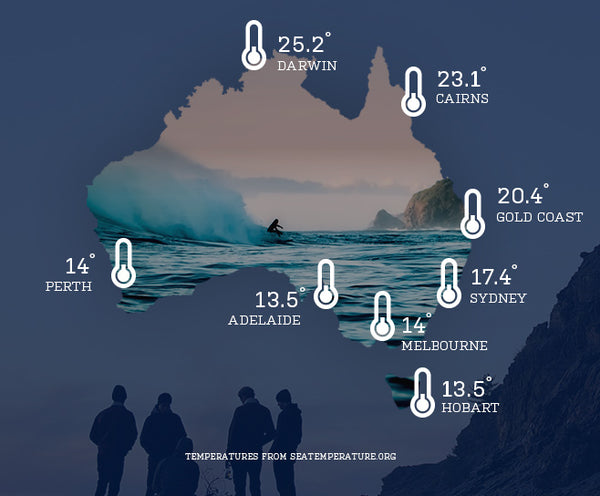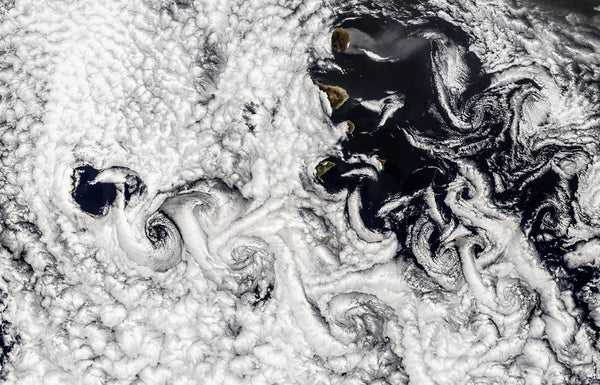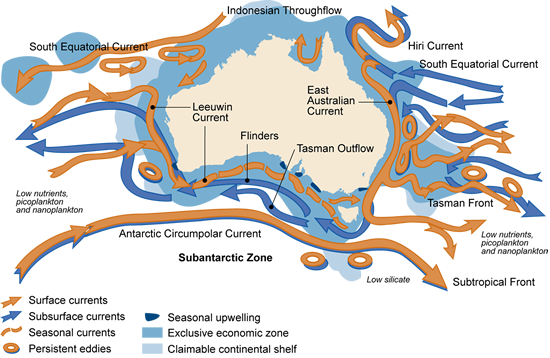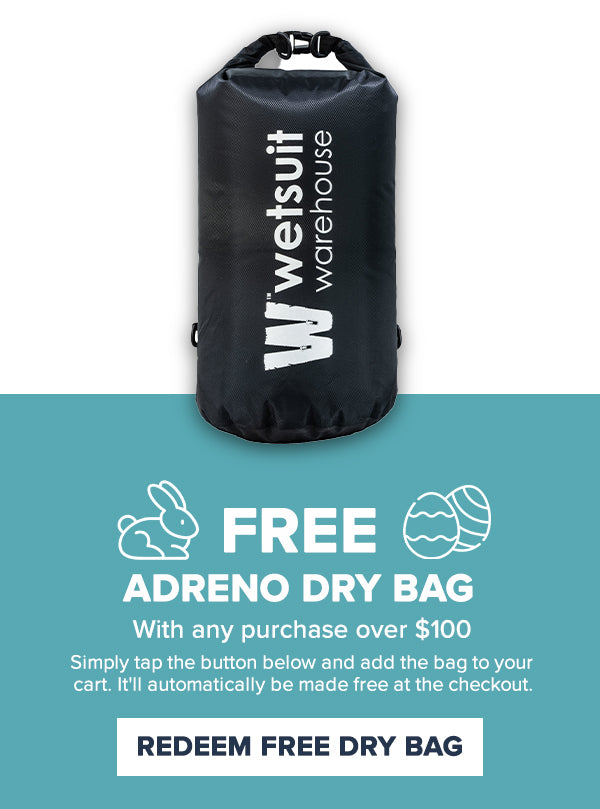August is Coming - Prepare yourself for Australia's coldest water temperatures.
July 31, 2018 5 min read

It's easy to assume that when it's cold outside, it's equally cold on the water but in Australia this is not the case and on average the coldest water temperatures, aka wetsuit season, are mid to late August! In this blog we look at the key contributing factors to deviation in surface water temperatures with the hope of making it somewhat simpler to find the right wetsuit for you. The diversity and disparity of surface water and atmospheric temperatures are mostly due to ocean currents, the Coriolis affect and phenomena such as Cold Core Eddies and Ekman Transport, also referred to as Cold Water Upwelling.

Australia's East Coast is subject to two major currents: longshore drift and the East Australia Current (EAC): the Nemo inspired turtle highway which runs southward at a rate of 16,000 swimming pools per second, hence Pappa turtle's extreme froth. The EAC is fed from the South Equatorial Current which crosses the Coral Sea and forks to PNG and Australia. Longshore drift is the process in which sediment is moved along a coastline and is substantially closer to the coast then the EAC - longshore drift is essentially the movement of sediment along our coast - hence why we need to build sand pumping jetties! These currents can create vast difference in water temperatures as they are the mechanisms that produce processes like Ekman Transport and Cold Core Eddies (also know as Cold Core Rings).
What is Cold Water Up-welling?
Cold-water upwelling is a process resulting from surface stress and turbulence caused by opposing forces (the net motion of these is known as Ekman Transport)- in our case it's typically induced by a northerly breeze running down the east coast, speeding up the EAC whilst slowing long-shore drift. This, in simple terms, forces warm surface water out to sea in a southern direction but then eastward at an increased rate - this interaction creates eddies but we will talk about that below. As the warm surface water is displaced south and eastward it is replaced by deep/sub-surface waters from out to sea, generally hailing from the steppes of our continental shelf. This up-welled water can be up to 10°C less than the surface water it is replacing. Cold Water Up-welling is affected by Coriolis, ocean-floor typography and prevailing winds, which means it affects different coastlines differently. On the east coast of Australia, Cold Water Up-welling generally occurs as a result of extended northerly winds, which is also the calling card for blue-bottles... Basically, northerlies bring sub-ideal wind-swells, colder water and bluebottles eww...

What are Cold Core Eddies?
Cold Core Eddies (CCE) are oceanic eddies that can vary in size from 1mm to 10,000kms and can last from <1 sec to months, maybe even years, and are generated through the thermodynamic interaction between water-bodies of different temperatures. It's said that the East Australian Current is one of a handful of worldly currents to produce semi-permanent Cold Core Eddies and is notorious for producing eddies from it's tail that are within the mesoscale - mesoscale eddies range from 5km diameter to several hundred and can be up to 4km deep! Even more prolific is where the Antarctic Circumpolar Current meets the Southern Pacific and Indian oceans, so really, Australia is almost surrounded by these monster eddies. Cold Core Eddies can move in indeterminable directions, rates and duration are hard to identify and track. In 2009 an eddie was identified in the EAC which grew to over 100km in size, in-turn diverting the entire East Australian Current (much like the Polar Vortices that our Northern Hemisphere homies have to deal with). How Cold Core Eddies affect surface water temperatures, or more importantly, which wetsuit thickness to choose, is that these huge eddies can impede the flow of the East Australian Current, which can as a result push warm EAC water even further offshore which can then propel the eddy further shore ward, compounding the cooling affect from current diversion and that of Ekman transport.

How does long-shore drift affect water temperatures?
Although not explicitly indicative to water temperatures, long-shore drift is involved in the interplay between cold core eddies, upwelling and therefore Ekman Transport, but more importantly, long-shore drift (LSD) is the way in which cold fresh/brackish estuary water enters coastal waters. LSD carries particulate matter, like sand from breaking waves and murk and dirt from river mouths - hence it's high-viscosity. Long-shore drift resists the increased rate of flow associated with Ekman Transport due to it's viscosity, therefore slowing the rate of cooling associated with cold-water upwellings however being that the current moves northward along the east coast, it is constantly supplying the coastline with cooler waters from the south. If there's a river mouth southwards of where you swim, you can expect colder water as the estuarine water mixes with the warmer ocean water.

When is the best time to buy a wetsuit?
We get asked this a lot, obviously, and there's no simple answer, especially when we confuse ourselves with complex systems relating to fluid dynamics and weather but realistically it's a good thing there's no simple answer, the basic answer is: before you get cold. We find that value and comfort can come from the same place and that's not necessarily just buying the best or most expensive suit, it's buying a suit that you can add and remove warmth from. Although the world of modular wetsuits is relatively untapped we think that sometimes the most important elements are socks/boots, gloves, hoodsand items that you can layer. Buying a wetsuit for every season can be a costly endeavour, a luxurious one but such is luxury... We find the best option is to look for a suit that will keep you warm in the average minimum temperatures you expect to be surfing, diving or whatever-ing in. On the colder days you can slap on some peripherals like a glove or a hood, or a thermal layer for underneath the wetsuit as each and all of these will make the suit more effective in colder temperatures. On the warm side of things, as in, for when your wetsuit may be too thick, you can always pull open the neck and flush out the heated water and replace it with cold water, just like liquid cooling in a car. Just do it in dribs and drabs as rapidly reducing the internal temperature of a suit can cause the warm blood in your skin to lose it's warmth before your body retracts it from your extremities.

This may seem like anecdotal ocean information relating to wetsuits but the disturbance and changes in ocean currents are generally considered to be the predecessor of cataclysmic climate change events and are often described as the 'canary in the coal mine' when it comes to climate change. This 'magnifying glass' is the reason we are learning so much about ocean currents in recent years.
Leave a comment
Comments will be approved before showing up.


